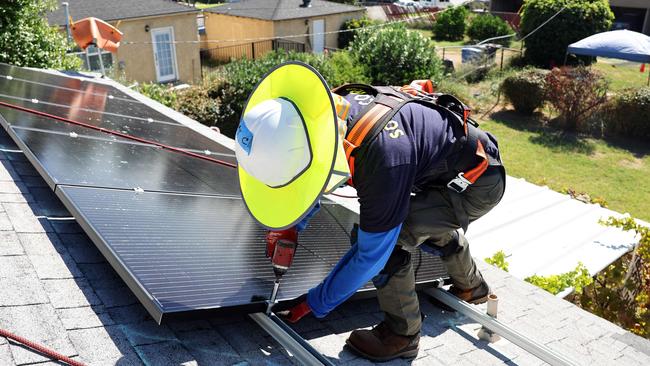Wholesale power prices surge in southern Australia, threatening to up pressure on households
The cost of producing electricity in Tasmania, Victoria and South Australia spiked in the first three months of 2025 and that’s bad news for electricity bills.

The cost of producing electricity during the first three months of 2025 jumped across the southern states, Australia’s energy market operator has revealed, as record demand for power coincided with a spate of coal outages and hydropower woes.
The increase threatens to further stoke electricity bills in some regions when annual tariffs are reset in 2026, while the spate of outages underscore the challenge in transitioning away from coal power.
The Australian Energy Market Operator said wholesale electricity prices across the National Electricity Market during the first quarter of 2025 rose 9 per cent from the previous year. However, the figure masks wide volatility across the different states.
Wholesale electricity prices in Tasmania rose 67 per cent from the same quarter a year earlier, while the cost of producing electricity in Victoria and South Australia rose 15 per cent and 20 per cent, respectively. Victoria, however, recorded the lowest cost of producing electricity.
Households and businesses do not pay wholesale electricity prices, but they are a major driver in determining annual tariffs. The figures from the first three months of 2025 will affect bills from July 1, 2026.
An improvement in market conditions could yet lead to reduced bills in 2026, but the first-quarter report indicates a lingering threat. A record number of households are already struggling to pay their utility bills amid a cost-of-living crisis.
AEMO said Tasmania was hit by continued issues with pumped hydro production. Tasmania has experienced prolonged drought.
In Queensland, aided by cooler temperatures over the three months, wholesale prices fell 21 per cent compared to levels a year earlier. Wholesale prices in NSW were little changed.
Violette Mouchaileh, AEMO executive general manager of policy, said the states that recorded increases were affected by record demand, while black and brown coal-fired generator availability declined to fresh first-quarter lows. But Ms Mouchaileh said the influx of renewables had softened the impact.
“Upward forces in coal and hydro prices were largely offset by downward pressures from higher renewable energy availability and fewer extreme price volatility events,” Ms Mouchaileh said. “Additionally, the frequency of negative pricing increased during the quarter, particularly in the NEM’s northern regions, which was largely attributable to grid-scale solar and wind setting prices more often.”
The Australian Energy Regulator, which released its own report that broadly echoed the findings of AEMO, said the quarter was marked by an influx of renewables that drove a wave of negative wholesale prices.
Negative wholesale pricing occurs when the supply of electricity exceeds demand. These typically occur during sunny days when high levels of rooftop solar means electricity demand falls.
Negative pricing is economically damaging to coal power stations, which are unable to be powered down. The AER there were a record 699 negative prices set in NSW in the quarter.
Negative pricing incentivises the development of batteries, which can charge when prices are low before operators then dispatch them during periods of high wholesale prices.
AER board member Jarrod Ball said the data encapsulated Australia’s energy transition.
“A record volume of industrial-scale batteries entered this quarter, and the amount of electricity discharged from batteries rose 85.5 per cent compared to this time last year,” Mr Ball said.




To join the conversation, please log in. Don't have an account? Register
Join the conversation, you are commenting as Logout